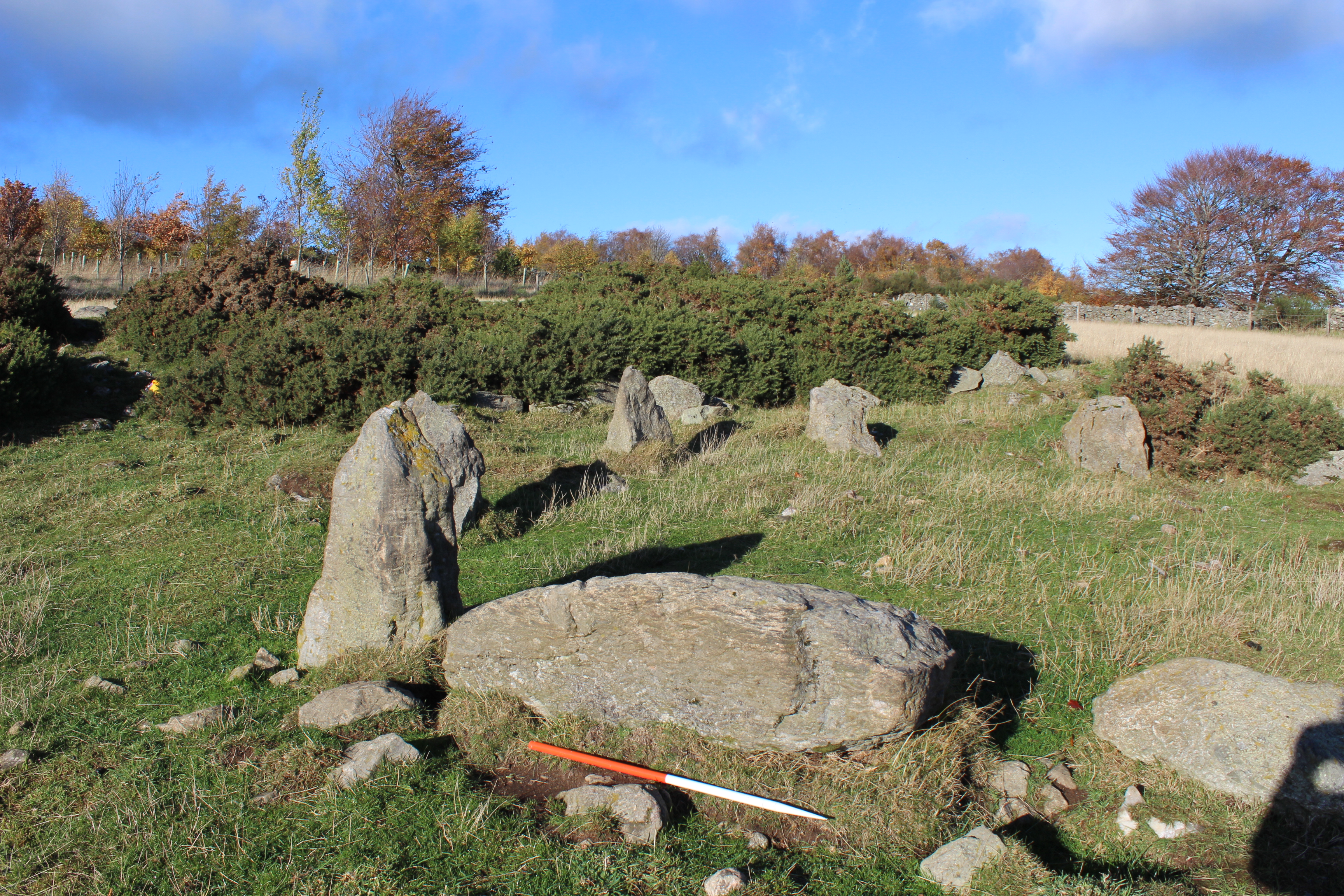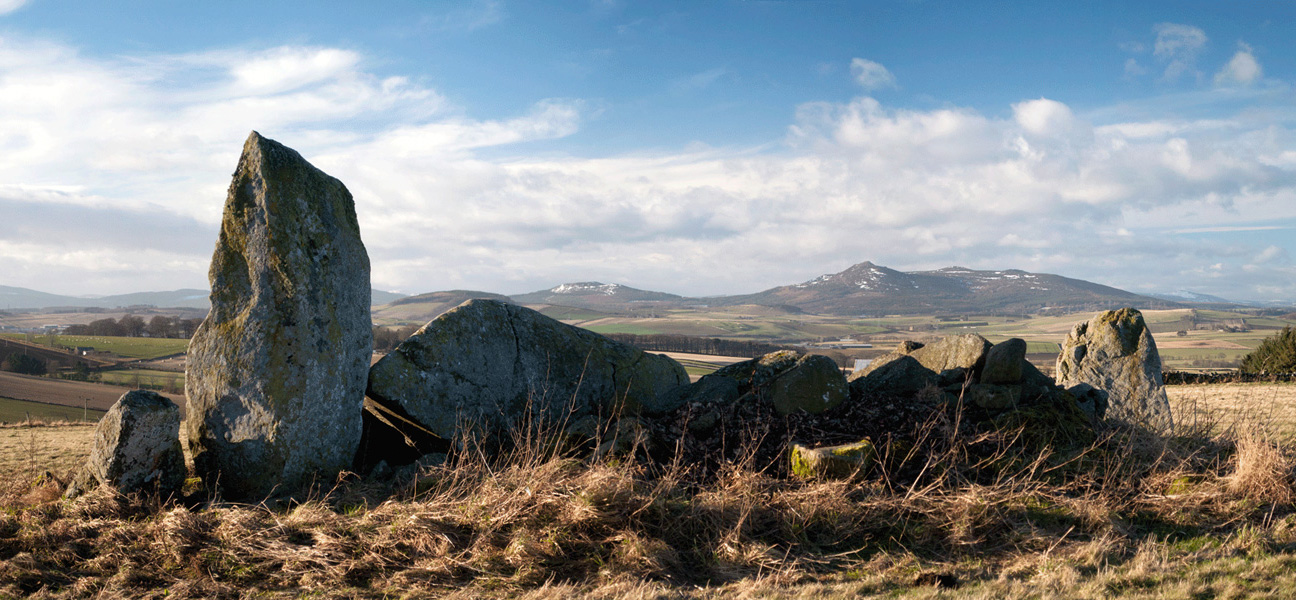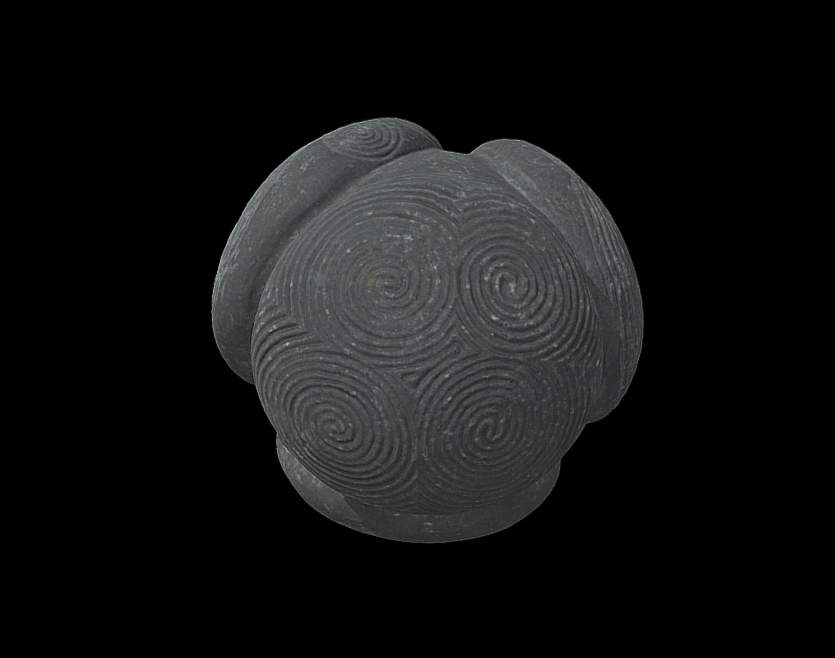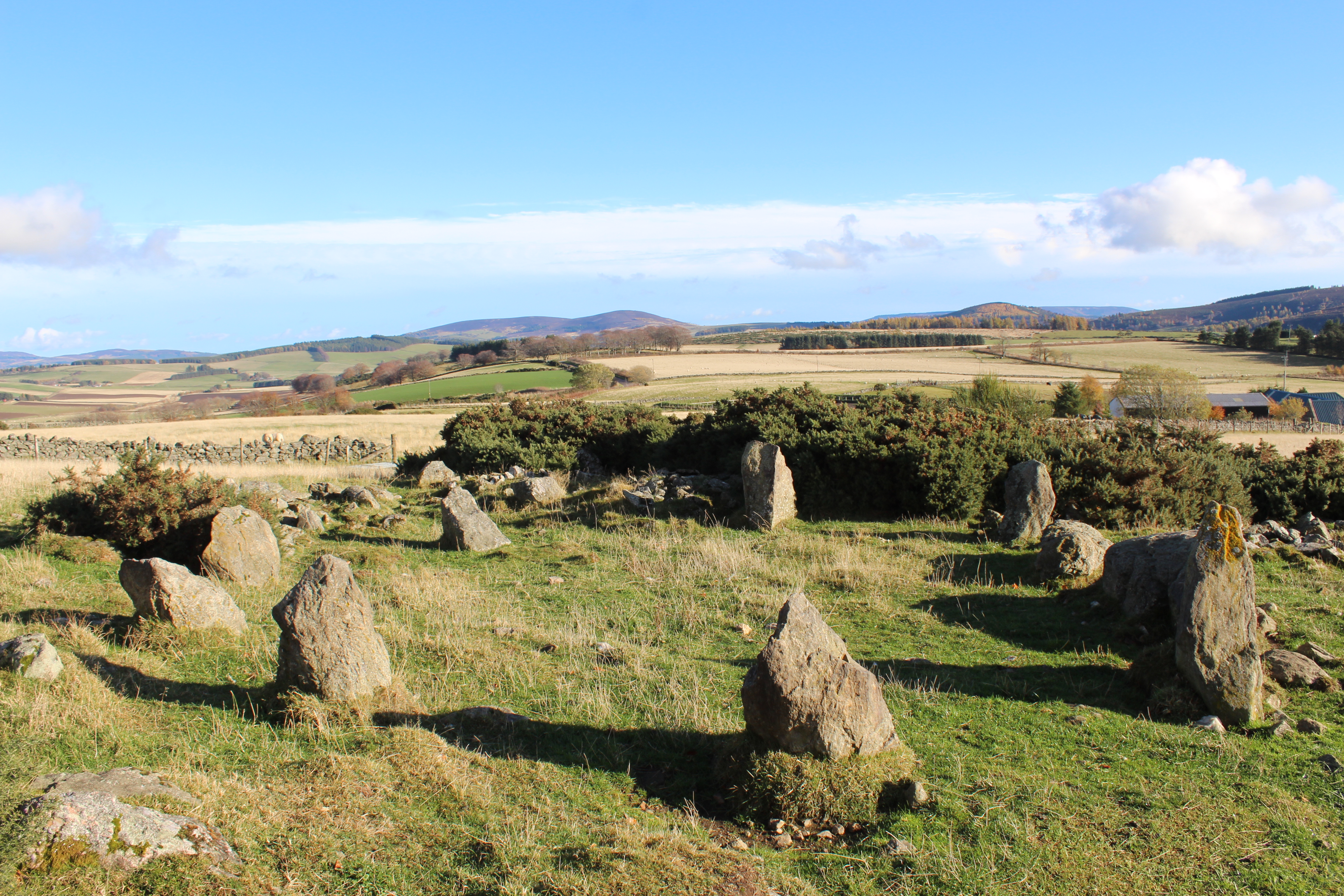In Photos: Stone Monument Discovered in Scotland
Stone circle

Archaeologists thought this stone circle near the village of Alford, west of Aberdeen was thousands of years old — but it turns out to have been built less than 30 years ago, by a local farmer. The stone circle was reported to archaeologists for the first time in late 2018. [Read more about the Scotland stone circle]
Recumbent stone

Like many stone circles in the northeast of Scotland, the stone circle near Alford has a large "recumbent" stone lying on its side near the southwest of the circle. Replica features like this led local archaeologists to think that the newly discovered stone circle had been built between 3,500 and 4,500 years ago. But the researchers have since learned that was built by a former owner of the farm in the 1990s.
Ancient landmarks

The ancient monuments known as recumbent stone circles are only found in the north-east of Scotland and some parts of Ireland – although many thousands of stone circles without recumbent stones are found throughout Britain and Europe.
One of the best preserved recumbent stone circles is the Easter Aquhothies circle near the town of Inverurie, north-west of Aberdeen.
Local speciality

More than 90 recumbent stone circles built during the Neolithic period are known to exist in northeast Scotland.
Archaeologist debate whether they were used for astronomical observations, such as determining the midwinter sunrise – an important date for early agricultural communities – or the perceived motions of the moon.
Most of Scotland’s recumbent stone circles are located on high ground with wide views of the surrounding landscape – like this ancient stone circle near the village of Kirkton of Bourtie, near Inverurie.
Neolithic carved stone balls

Another prehistoric art form found mainly in the northeast of Scotland are the region's mysterious carved stone balls. Archaeologists aren't sure what the stone balls were used for. They date back about 5,000 years ago.
Towie ball

The most famous Neolithic carved stone ball is known as the Towie ball, after the village where it was found in the 19th century.
More than 500 similar objects have since been found, mainly in the north-east of Scotland, but also in the Orkney Islands and in parts of Ireland.
Complete circle

The replica recumbent stone circle built near Alford was a little smaller than usual — about 25 feet (7 meters) across, compared to an average of around 33 feet (10 m).But archaeologists say it was a remarkably faithful copy of genuinely ancient stone circles in the northeast of Scotland.
Get the world’s most fascinating discoveries delivered straight to your inbox.
Rocks of ages

Archaeologists think that the farmer built the replica stone circle from stones that had been cleared from nearby fields.The archaeological researchers say he hadn't tried to trick anyone with the replica; rather, he seems to have used it to celebrate the landscape.
Tom Metcalfe is a freelance journalist and regular Live Science contributor who is based in London in the United Kingdom. Tom writes mainly about science, space, archaeology, the Earth and the oceans. He has also written for the BBC, NBC News, National Geographic, Scientific American, Air & Space, and many others.


